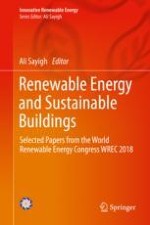2020 | OriginalPaper | Chapter
45. Developing Energy Control and Optimisation Methodology for Built Environment of the Future
Authors : Monday Ikhide, Alex Egaji, Abdullahi Ahmed
Published in: Renewable Energy and Sustainable Buildings
Publisher: Springer International Publishing
Activate our intelligent search to find suitable subject content or patents.
Select sections of text to find matching patents with Artificial Intelligence. powered by
Select sections of text to find additional relevant content using AI-assisted search. powered by
